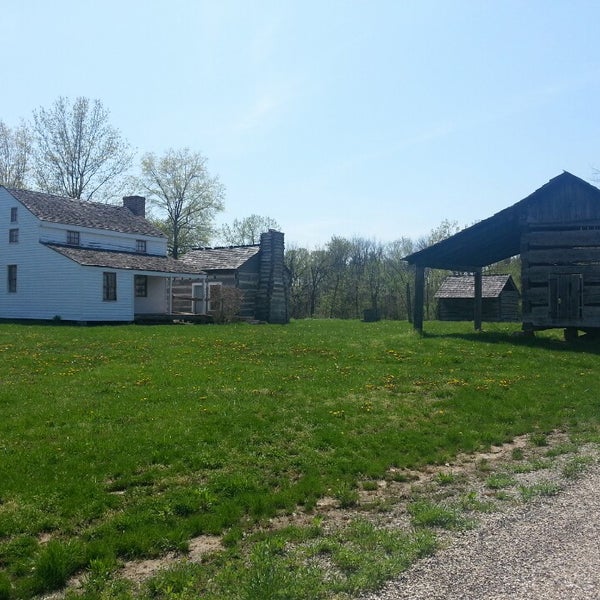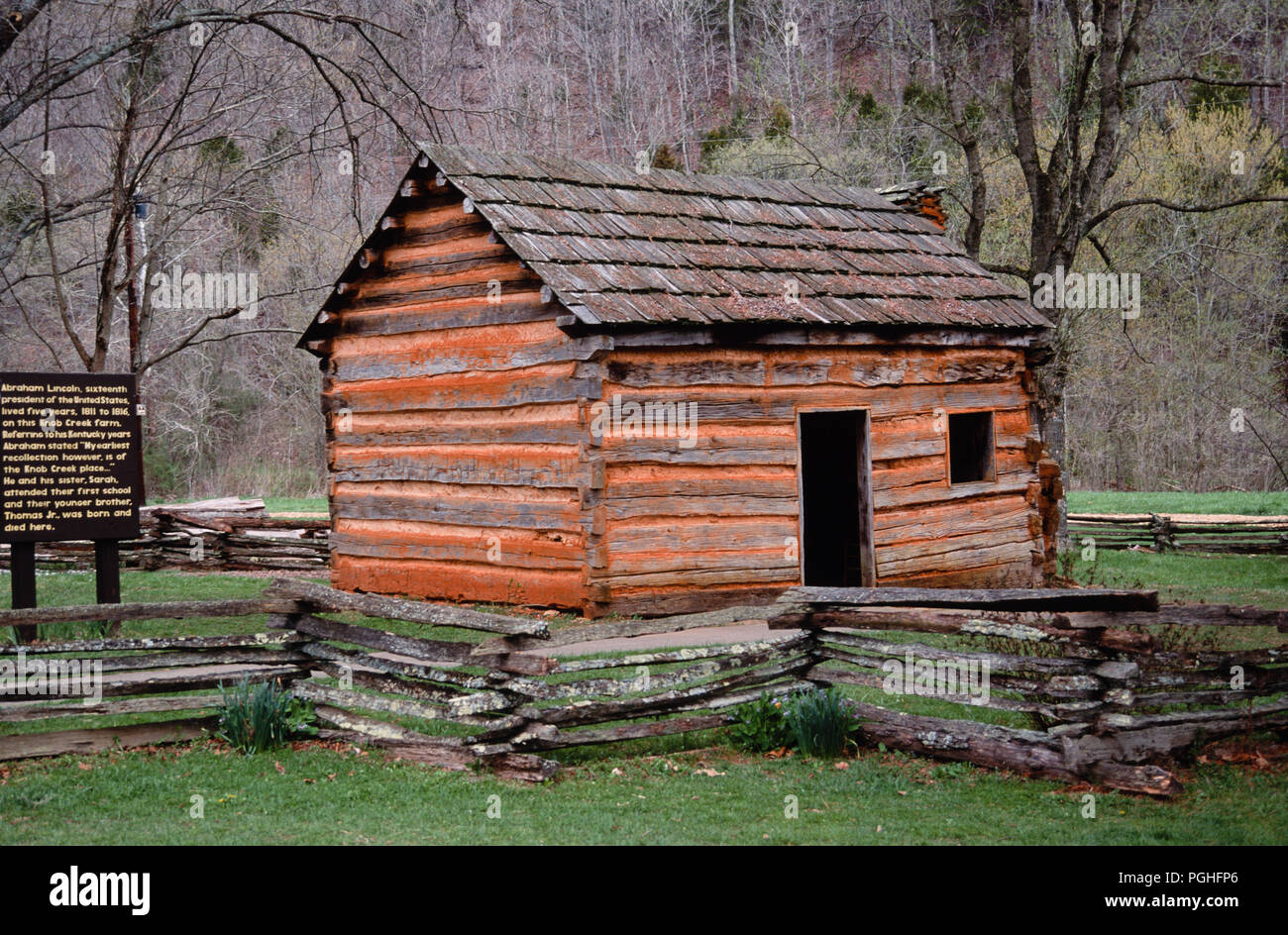

The rosettes in the ceiling coffers are quotations from the Pantheon in Rome. The entire space is bathed in light from a large skylight and the sixteen windows, each covered by a classical grille. The interior is one large room, in which the log cabin is an outsized presence.
#Lincoln log cabin in kentucky free#
The building has a shallow gabled front with a strong, dentiled cornice, above which rests a parapet inscribed with the words: “Here over the log cabin where Abraham Lincoln was born, destined to preserve the Union and free the slave, a grateful people have dedicated this memorial to unity, peace, and brotherhood among these states.” The front and matching rear facades are hexastyle Doric porticos in front of a deep cornice with its requisite frieze, but with wreaths in place of metopes. It measures 50 x 35 feet and is set on a low podium at the top of four banks of stairs and landings. Built out of Stony Creek pink granite, the sober structure conveys strength and character.
#Lincoln log cabin in kentucky windows#
Pope’s building is purposefully loaded with symbolism: its sixteen windows refer to Lincoln’s place as the nation’s sixteenth president and its fifty-six stone steps represent the president’s age when he was assassinated in 1865. Though Pope’s design was probably influenced by Charles McKim’s Morgan Library (1907) in New York, it also has much in common with other memorials of the era, including those to Presidents Grant (1891–1897) and McKinley (1905–1907). This design was beyond the means of the Lincoln Farm Association and Pope scaled back his plans to produce a dignified Memorial Building at the top of a knoll, well above the actual Sinking Spring. It included a larger memorial building with an arcaded central court surrounded by exhibition halls and an auditorium. Pope’s original scheme was far grander than what was eventually built. Pope studied architecture at Columbia University, won the prestigious Rome Prize to study at the American Academy in Rome, spent two years at the Ecole des Beaux Arts in Paris and worked for the prestigious New York firm of McKim, Mead and White. At the time, he was one of America’s consummate masters of classicism. The Lincoln Farm Association originally considered staging a competition for the design of the Lincoln birthplace memorial but ultimately commissioned John Russell Pope directly. It seems likely that the little structure enshrined in Hodgenville is made up of logs from both of the supposed Lincoln and Davis cabins. They trimmed the logs to fit and burned the discarded pieces to keep them out of the hands of treasure hunters. According to popular lore, when workers attempted to reassemble the Lincoln Log Cabin inside John Russell Pope’s already completed temple, they discovered it too large for the space. If the Association knew it now possessed both the Lincoln and the Davis cabins, it was kept secret. In 1901 Bigham and Dennett sent the cabins north to the Buffalo Pan-American Exposition, where they were displayed facing each other as part of “The Old Plantation” concession, which also contained five other equally humble log structures, including slave cabins.įinally, in 1906, they sold the Lincoln Birthplace Log Cabin to the Lincoln Farm Association but both cabins were shipped from storage in New York to Kentucky.

According to press accounts, the cabins were on view in the midway, each fitted out with furniture and personal effects of the Lincoln and Davis families. Two years later at Nashville’s Tennessee Centennial and International Exposition they exhibited the Lincoln log cabin alongside the birthplace log cabin of Jefferson Davis, president of the Confederate States of America. They hoped to make a profit charging admission to view the cabin during the commemorative encampment of the Grand Army of the Republic in Louisville in 1895. In 1894 Alfred Dennett and the Reverend James Bigham purchased the cabin from a man who claimed that he had purchased it from Abraham Lincoln’s father. The history of that log cabin is long and complicated. Nonetheless, in 1911 Lincoln’s supposed birthplace cabin was enshrined inside a Greek-inspired, Beaux-Arts temple designed by John Russell Pope and paid for by the Lincoln Farm Association and the United States government. In his own words: “I was born February 12, 1809, in the then Hardin County, Kentucky, at the point within the now County of Larue, a mile or a mile and a half from where Hodgen’s Mill now is…I know no means of identifying the precise locality.” As for the log cabin, the one displayed repeatedly at world’s fairs became a virtual national icon even though its authenticity has been in doubt since its first public showing. Lincoln himself was never clear as to the precise location of his birth. It is one of America’s most enduring legends that Abraham Lincoln was born in a log cabin on the Sinking Spring farm near Hodgenville, Kentucky.


 0 kommentar(er)
0 kommentar(er)
